Assessment of the underground bases of the Chinese Air Force (Part 4)
Part 2
Part 3
Estimated capacity of PLA underground air bases
Estimation of the capacity of the network of PLA underground hangars presents certain difficulties due to the lack of published schemes for their location. While the cross-section of the entrance to the tunnels can be accurately assessed due to the available images, the lack of knowledge about the internal location, especially if the hangar consists of several branches or parallel tunnels, leads to a high risk of underestimating the internal potential of the hangars.
Exploring the small number of available images and the publicly accessible interior of Datangshan, it can be assumed that a simple arrangement of an underground hangar connecting the entrances of a constant-section tunnel having | -, L-, U- or S-shaped between entrances.
To test this hypothesis, the authors estimated the length of the tunnel for all airfields listed in the table, the routing of the tunnel under the top of a hill or mountain. In cases where the geometry allowed several options for the location of the tunnel, the authors considered the length of the tunnel as the best case (long) and worst case (short).
Although the results for J-11A / B / Su-30MKK / MK2 and J-20 do not correspond to any H-5 Beagle layout, taking into account fundamentally new types of swept wing platforms, this should not be a surprise.
If we assume that the future of the PLA Air Force will be combining H-6H / M / K / U, J-11A / B / Cy-30MKK / MK2, J-20 and J-10 aircraft, then we can assume a reasonable placement of all types of aircraft taking into account the prevailing width of the tunnel.
The capacity results for the H-6 Badger are listed in the table, as a rule, they are multiples of the squadrons of aircraft (12 aircraft each) and with some more excess. The total capacity is approximately 140 aircraft. These are more than 120 PLA H-6 Badger aircraft, mentioned in open sources. At first glance, we can assume that the PLA has a capacity of underground hangars sufficient to accommodate all fleet H-6 Badger. The additional large complex in Leng Shui Chi was excluded from the calculations due to the uncertainty of its status and capabilities.
Underground hangars built for the cloned MiG are also suitable for locating the J-10 despite the different shapes of the aircraft and its slightly larger dimensions. Most underground hangars involve the placement of aircraft multiple 12 (the number of aircraft in one squadron), and again with some excess. The aggregate capacity of these hangars ranges from 600 to 800 aircraft, which means that these underground hangars can accommodate around 3 / 4 existing and planned J-10A / B / S aircraft.
Today, the Flanker (Su-27) is the main fighter to gain air superiority of the Air Force and the PLA Navy. Therefore, it is advisable to consider how many Flanker planes can be placed underground hangars of size H-5. The resulting figure is about 600 aircraft, which is located on the upper boundary of the previously planned Flanker aircraft and significantly higher than the current deployed in the operational units of the Flanker aircraft.
The fifth-generation aircraft, the J-20, is likely to become the main tactical strike and aircraft to gain air superiority in the PLA Air Force. Surviving underground hangars of size H-5 can accommodate around X-NUMX aircraft J-500, provided that the size and shape of the aircraft does not change significantly in the development process.
The method of estimating the capacity of underground hangars is inherently conservative and underestimates the actual possibilities of the hangars due to the lack of accurate data and without taking into account the possibility of making branches in the main tunnel.
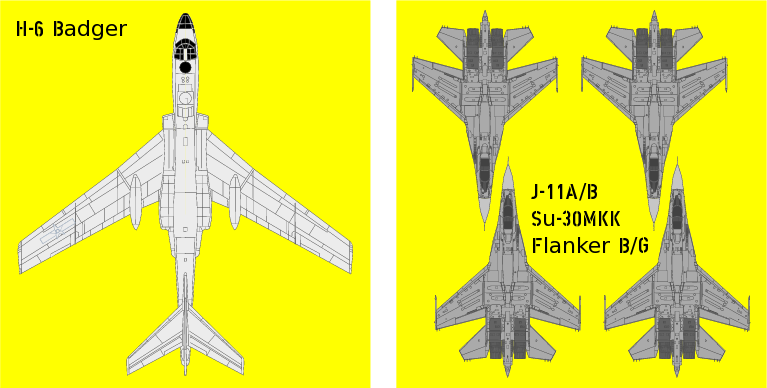
Comparative occupied space of underground hangars for the Badger (Tu-16) and Flanker (Su-30MKK) variants. Former Badger hangars will be able to accommodate a significant number of J-11A / B and Su-30MKK / MK2 Flanker aircraft. An underground hangar that can accommodate a dozen Badgers will be able to accommodate aviation Flankers Regiment (36 aircraft).
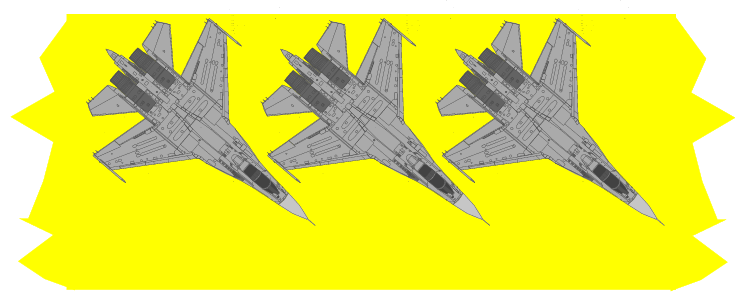
The hangars are built with an 20-22 meter-wide entrance / tunnel for accommodating the H-5 Beagle providing ideal conditions for accommodating J-11A / B / Su-27SK Flanker and Su-30MKK / MK2 Flanker G. An example of accommodating a number of planes located in 14 meters from each other.
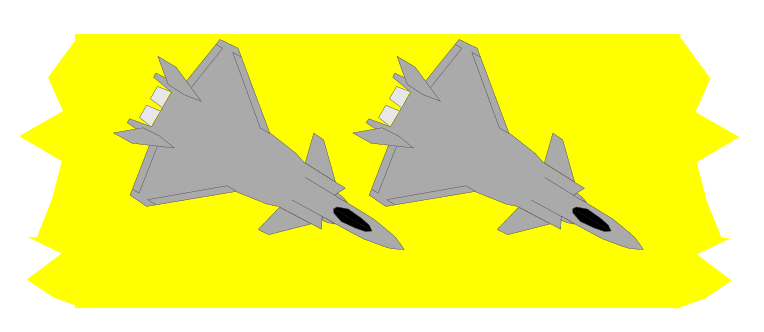
The hangars built with an 20-22 meter-wide entrance / tunnel to accommodate the H-5 Beagle will also be able to accommodate the new J-20, despite their greater length compared to the Flanker. An example of the placement of a number of aircraft located in 19 meters from each other.
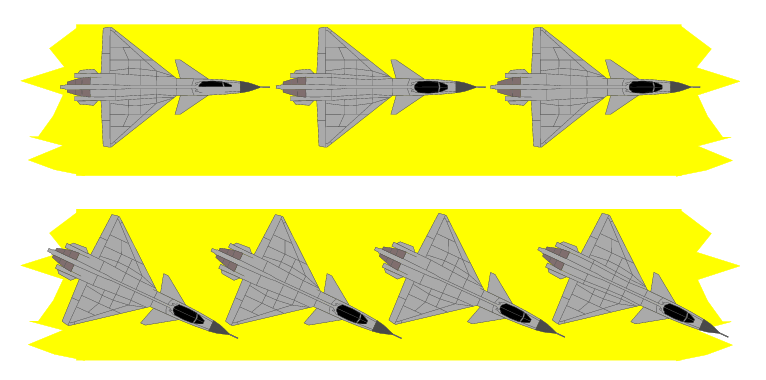
The hangars are built with an 12-15 meter-wide entrance / tunnel to accommodate the J-4 Fagot, J-5 Fresco, J-6 Farmer and J-7 Fishbed smaller than the J-8 Finback and J-10 aircraft. J-10 can be placed nose to tail or around 20% with a denser “package” when tilted.
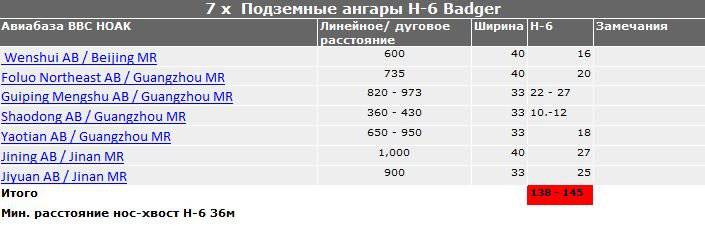
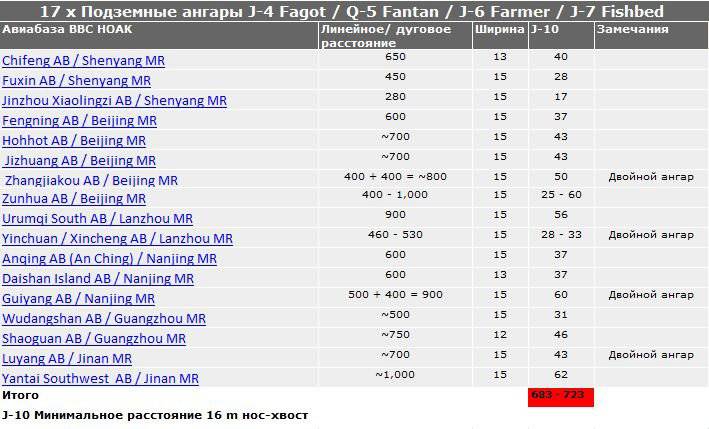
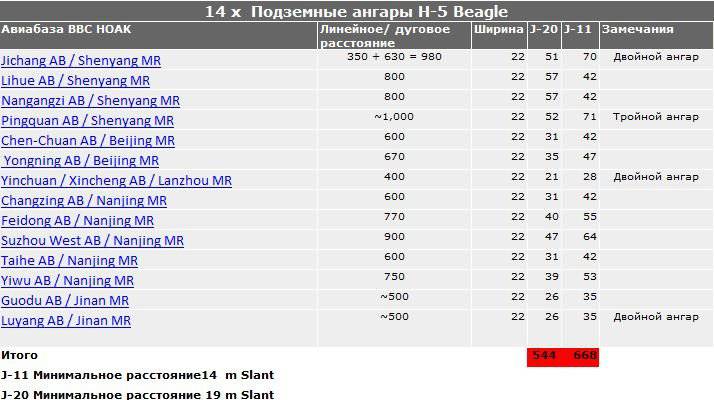
Three airbases were excluded from the analysis due to the presence of only low-resolution images that preclude a reliable assessment of the state and width of the entrance. These are Leng Shui Chi / Guangzhou MR, Neixiang / Jinan MR and Wenshan / Pinquan / Chengdu MR.
General plan of the location of the air base
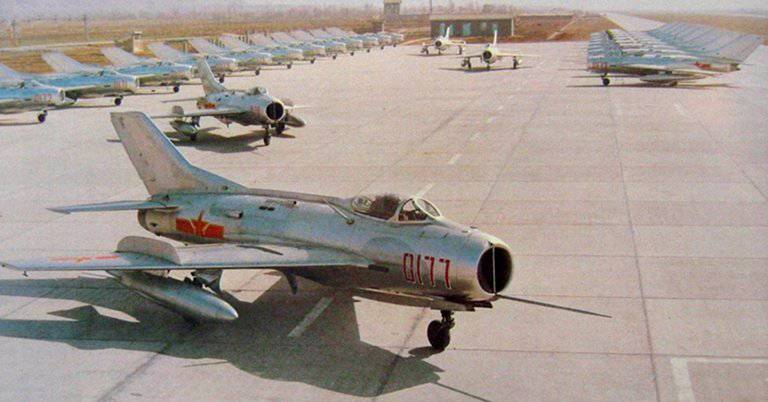
A characteristic feature of most PLA air bases is the use of large concrete pads at the ends of the main runway / taxiway system. At the top of the J-6 Farmer on a concrete site, at the bottom of the H-5 Beagle.
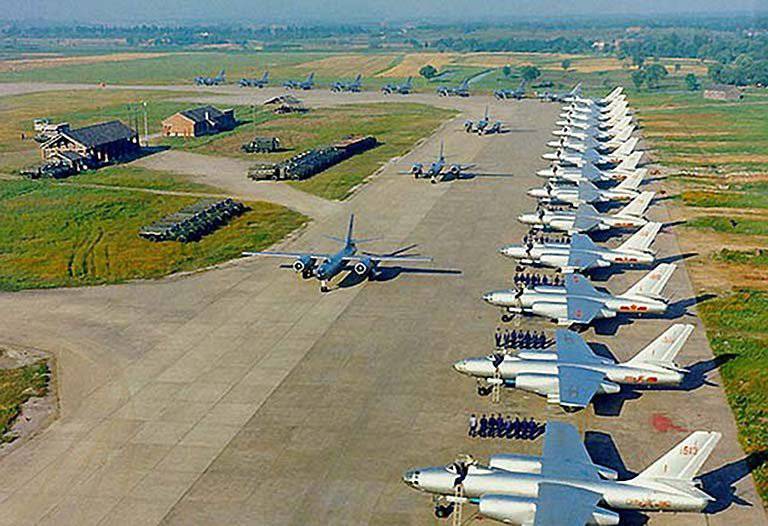
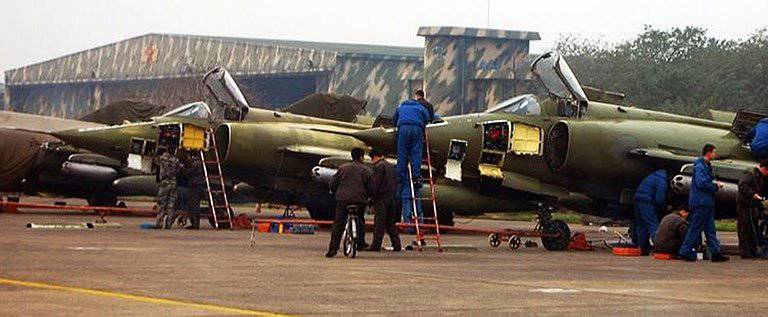
The PLA Air Force Base without underground hangars is usually the central concrete platform next to the hangars for engineering work on aircraft. On this base are placed Q-5 Fantan airplanes near air support. Visible disguised structures.
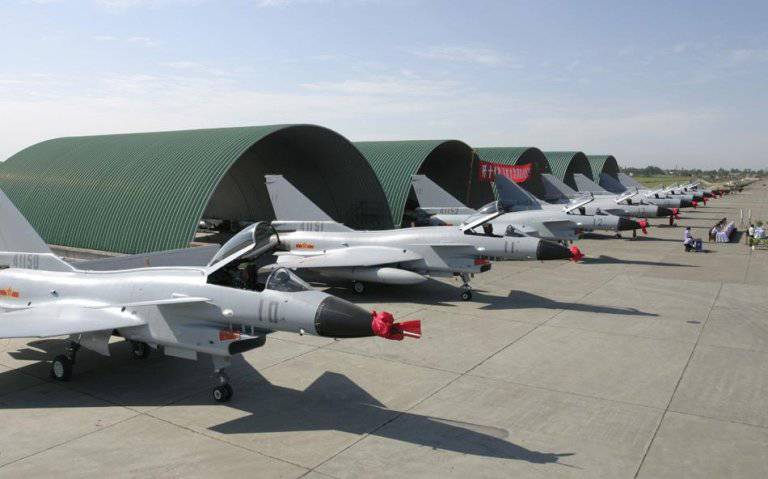
Light aircraft covers installed on the main concrete pavement are typical of many PLA airfields. Above and below are the two most common types of shelters. They provide protection against the weather and the fragments of air bombs, but not against cruise missiles.
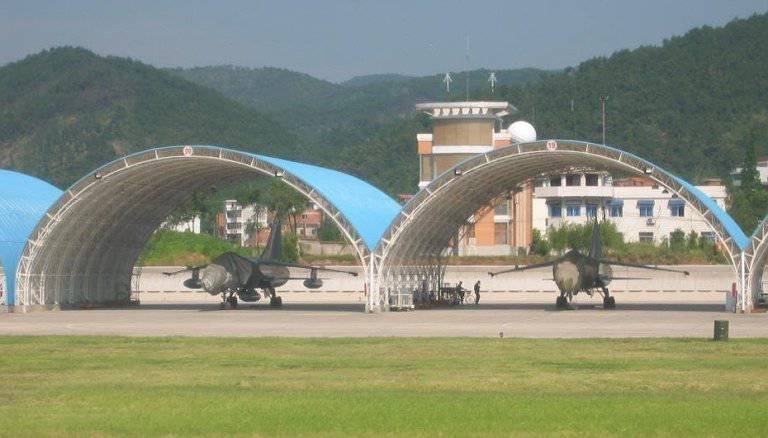
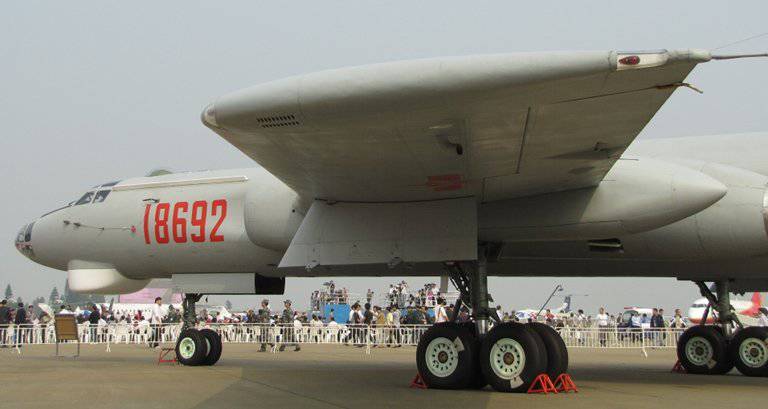
China is the only country in the world capable of protecting the fleet of its air tankers in underground hangars. Xian H-6 Badger is produced as a carrier of cruise missiles and tankers. It is a copied Tu-16, which itself is a descendant of Boeing B-29. The Tu-16 was originally designed to compete with the British "V" box office bomber.
Shantou NE airbase accommodates J-10A fighter jets. This is an excellent example of the “classic” Warsaw Pact base template with concrete pads with protected aviation shelters. The survivability of deployed aircraft is determined by the ability of the shelter to withstand penetrating ammunition, such as GBU-39 / B.
Longtian airbase is another example of the “classic” Warsaw Pact base template with concrete pads and protected aircraft shelters. Longtian has camouflage taxiways and ramps.
The Fe-30MK2 Flanker G. Feidong is based on the Feidong airbase is a typical very fortified base with an underground hangar and an auxiliary runway.
Details of the main runway of the Feidong airbase. Light aircraft covers provide protection against bad weather, but not against penetrating ammunition.
Details of the auxiliary runway, taxiway system, and the Feidong avibase underground hangar. The auxiliary runway is long enough to allow the Su-27 series aircraft to land on it.
Details of the entrance to the underground hangar and taxiways to it at the Feidong airbase. In many sections of the taxiways to the underground hangars, one can observe garbage and dirt as a result of landslides or runoff from the mountain during heavy rainfall typical of the eastern part of China. Many bases also show traces of active construction work on taxiways, indicating efforts to maintain them in working condition.
Details of the exit from the underground hangar at Feidong airbase, the beginning of the auxiliary runway, the building of the barracks and fuel storage.
Details of the underground hangar in three-dimensional visualization at the Feidong airbase.
In continuation of the article:
Vulnerability of underground air bases
Overview of all PLA underground air bases
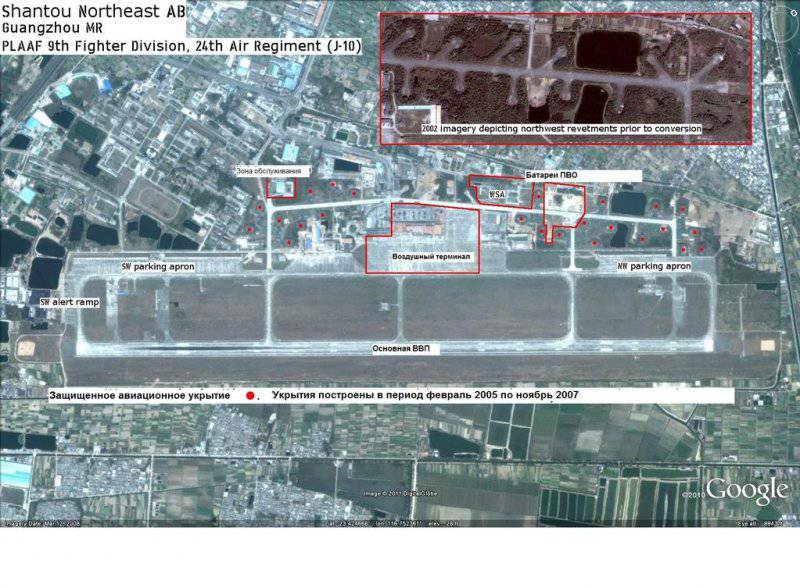
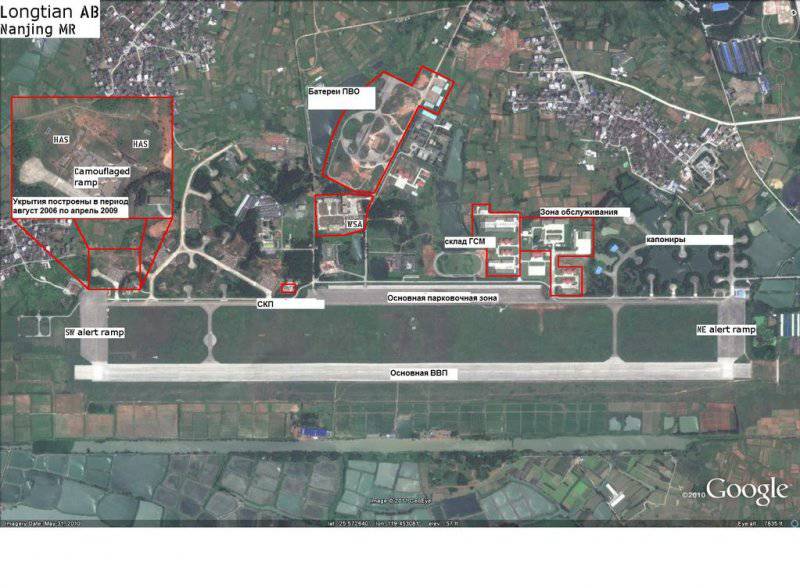
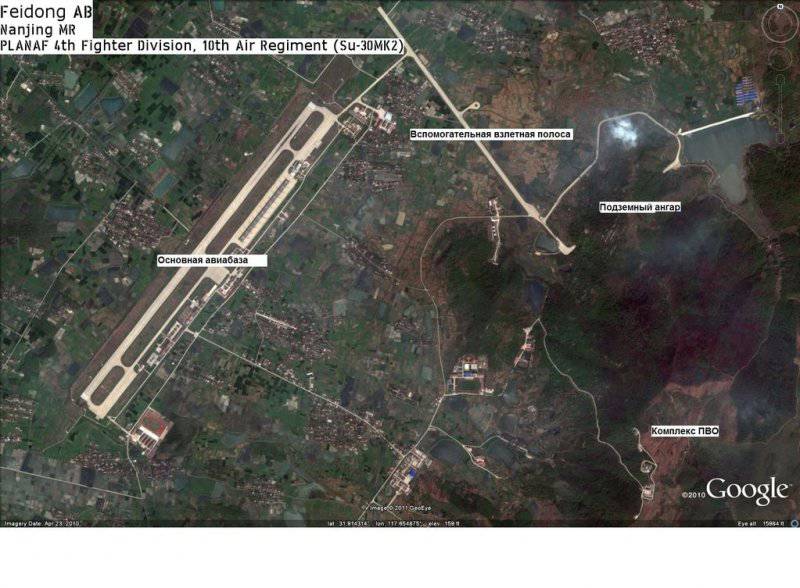
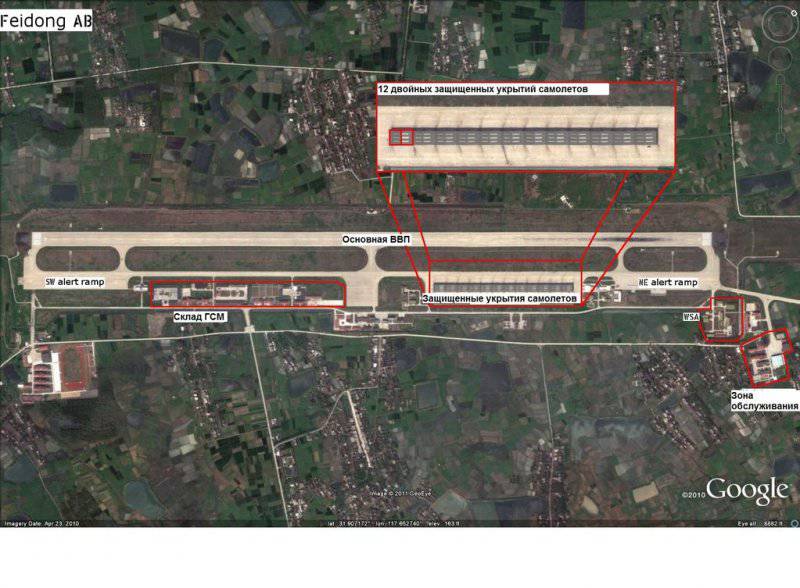
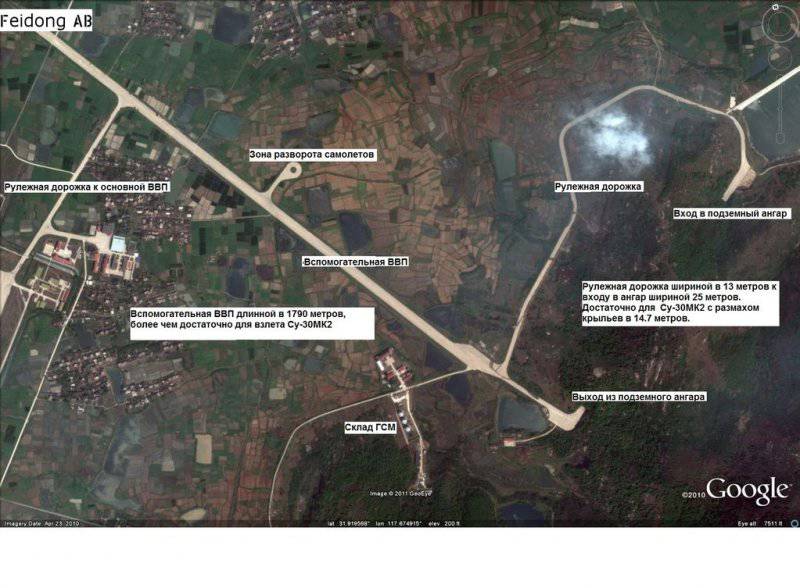
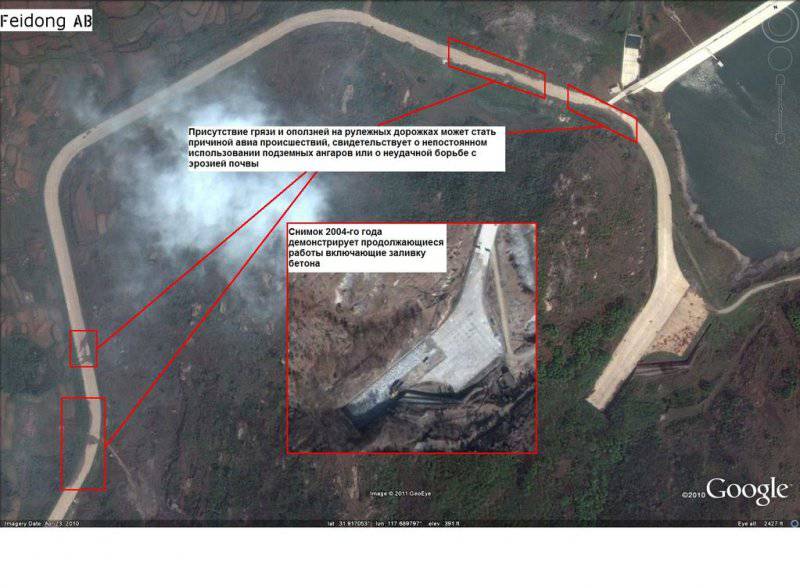
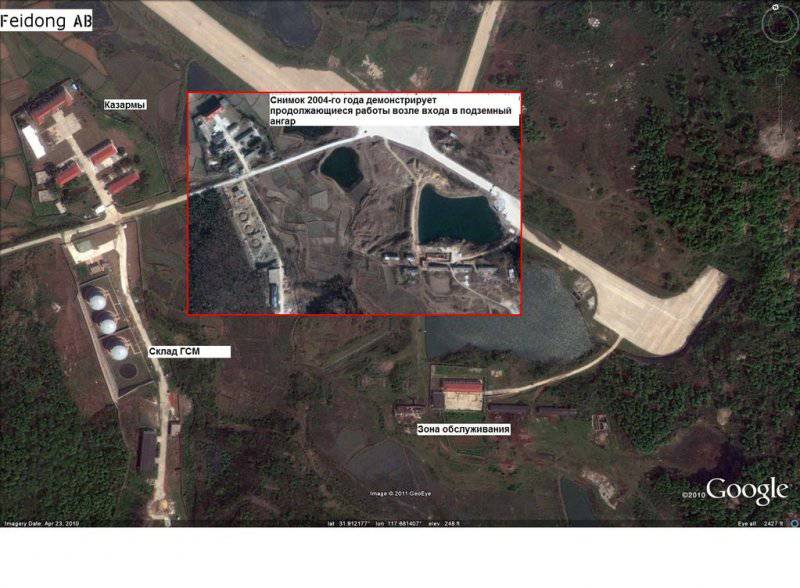
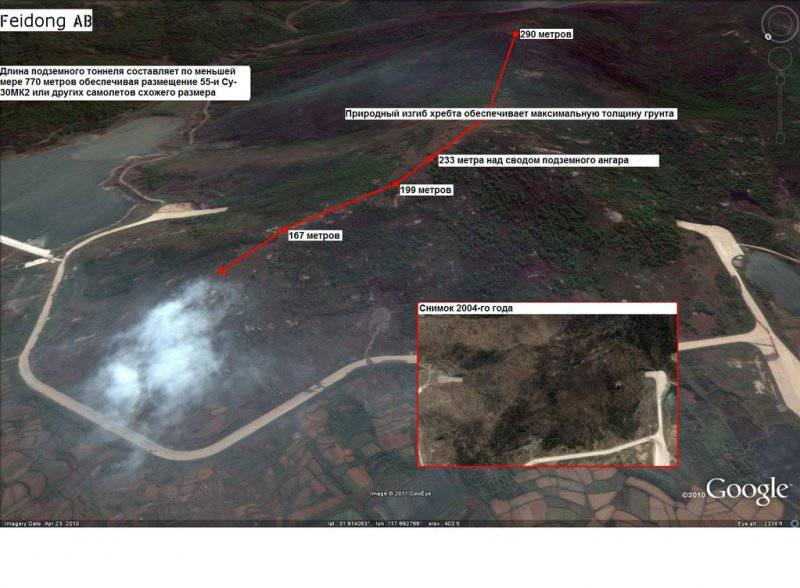
Information